
Wild Thoughts
Tuesday, July 23, 2019
By: Julia Randall - Adirondack Council's Clarence Petty Intern
Wild Thoughts is a three-part blog series on wilderness ethics and management written in anticipation of the 2020 Adirondack Wilderness Symposium. Organized in part by the Adirondack Council, the Symposium will be open to the public and will feature programming on such varied topics as the legal status of wilderness in New York State, wilderness management in the era of climate change, and the more intangible, philosophical character of wilderness. Similarly, each segment of this summer-long blog series will tackle a different, broad wilderness-related question. Together, the Symposium and this blog series will seek to offer a comprehensive, 21st Century consideration of wilderness as a legal concept, an ecological condition and cultural phenomenon.
Part I: What is a Wilderness?
“The time has come to rethink wilderness.” - William Cronon, "The Trouble with Wilderness”
I don’t know what wilderness is. “Wilderness” is one of those words like “energy,” “mind” or “language” that I use all the time but could never hope to define. If I try to picture it, some familiar (i.e. clichéd) images come to mind — pristine rivers, towering pines, howling wolves, and the like. It’s the idyllic landscape that lives in a Bob Ross painting, on the cover of National Geographic, in Planet Earth II. What I picture is land in harmony with itself, free from the cancerous spread of suburban sprawl that infects nearly every corner of the United States. This picture may be a kind of wilderness.
However, wilderness is not just a physical place — it’s also an idea, an ethic and a legal concept. It is a central element of the Adirondack Park, a patchwork of public and private land, in which people live but wildness still abounds. In this first installment of this blog series, I will lay out several definitions of wilderness, tracking the changing use of the term in the U.S. over time.
Why (re)define or rethink wilderness?
Because the meaning of “wilderness” is enshrined in federal and state law, it might seem redundant to investigate definitions of wilderness; however, I believe that this can help us inform, strengthen and enliven our defense of Article XIV, New York State’s constitutional protections for wildlands. Once we define wilderness, we can begin to ask more complicated, essential questions: for whom does wilderness exist? Why should it be preserved?
The Roots of Wilderness
When we say “wilderness” today, we usually refer to remote, beautiful places that teem with wildlife and are undisturbed by human activity, but in the 1700s and before, the word held more ghastly, negative connotations. The Christian Bible, for example, characterizes “wilderness” as a fraught, godless place. The term itself originated centuries ago from the Old English, “wildēornes,” or “land inhabited only by wild animals,” and from “wild dēor,” or “wild deer.” The related verb “bewilder” originated in the late 17th Century and means “to thoroughly go or be lead astray.”
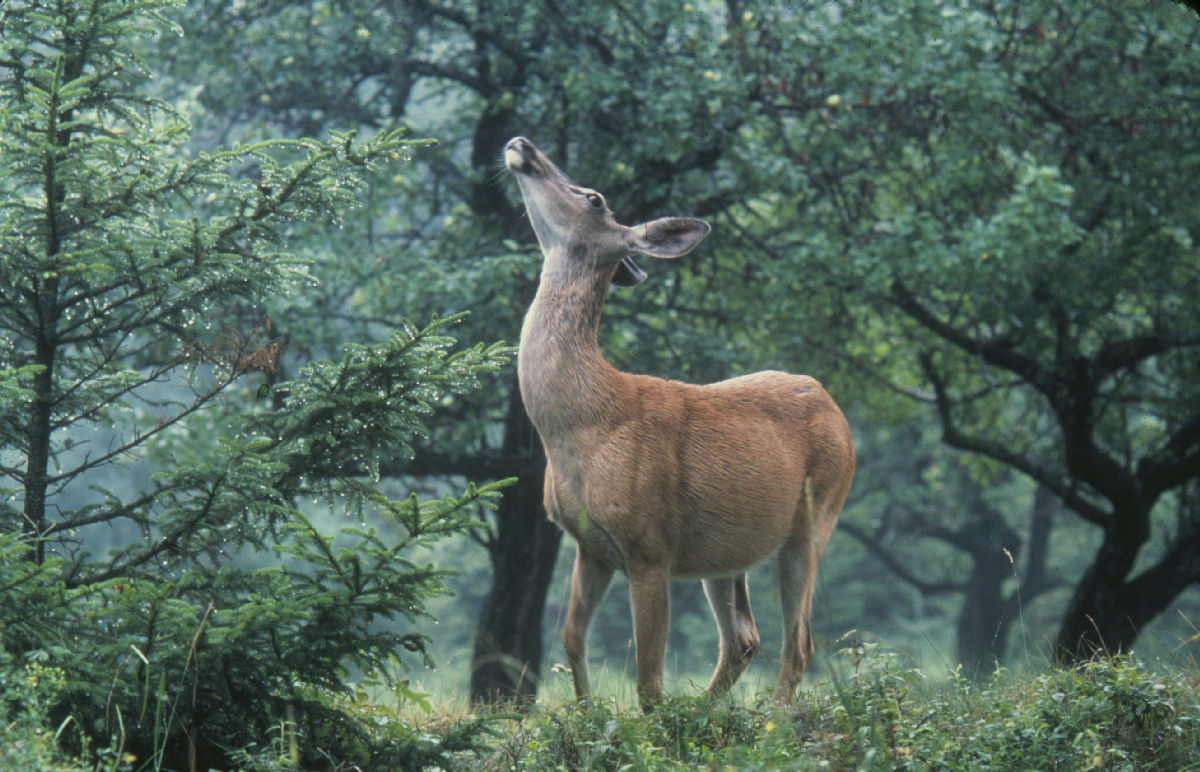 Wilderness" is derived from the Old English “wild dēor,” meaning “wild deer, Photo: Gary Randorf
Wilderness" is derived from the Old English “wild dēor,” meaning “wild deer, Photo: Gary Randorf
Wilderness was “savage,” pre-civilized land that terrified Christians. It was land where Christians did not live, but over which they still asserted sovereignty. As the Virginia Company wrote of their settlement in 1610, “is it not a dutie of christianitie, to behold the imprinted footsteps of Gods glorie, in e[v]ery region [u]nder hea[v]en?” It was of no consequence to them that there were already an estimated 16 million indigenous people living in North America. Conveniently, European colonizers viewed these people as less than human — “ravenous beasts,” by the 1682 account of Mary Rowlandson, a colonial woman who was held captive by Native Americans for nearly three months. Thus, pre-colonial American land was a wilderness — considered “land inhabited only by wild animals.”
Over multiple centuries, European colonizers set about eradicating wilderness and supplanting it with civilization. Native populations were wiped out, forests were felled, and colonial settlements sprang up in their place. Civilization was to American colonists a Miltonian garden of Eden, a “delicious Paradise” encased by “a steep wilderness, whose hairy sides … Access denied.” By the 19th century, though, the narrative had flipped: so-called ‘civilization’ came to be seen as a scourge, and wild places became an Edenic environment where one could seek spiritual renewal. In critic William Cronon’s words, “Satan’s home had become God’s Own Temple.”
Wilderness as an American ideal
With the arrival of Romanticism and American Transcendentalism, writers like Henry David Thoreau and John Muir began describing the natural world as a place of mystical beauty, an ancestral home. They believed that physical objects found in nature represented metaphysical ones. Thus, to travel to the natural world was to break from the depravity of civilized life and to commune with God. Wilderness still inspired fear, but of a more sublime sort.
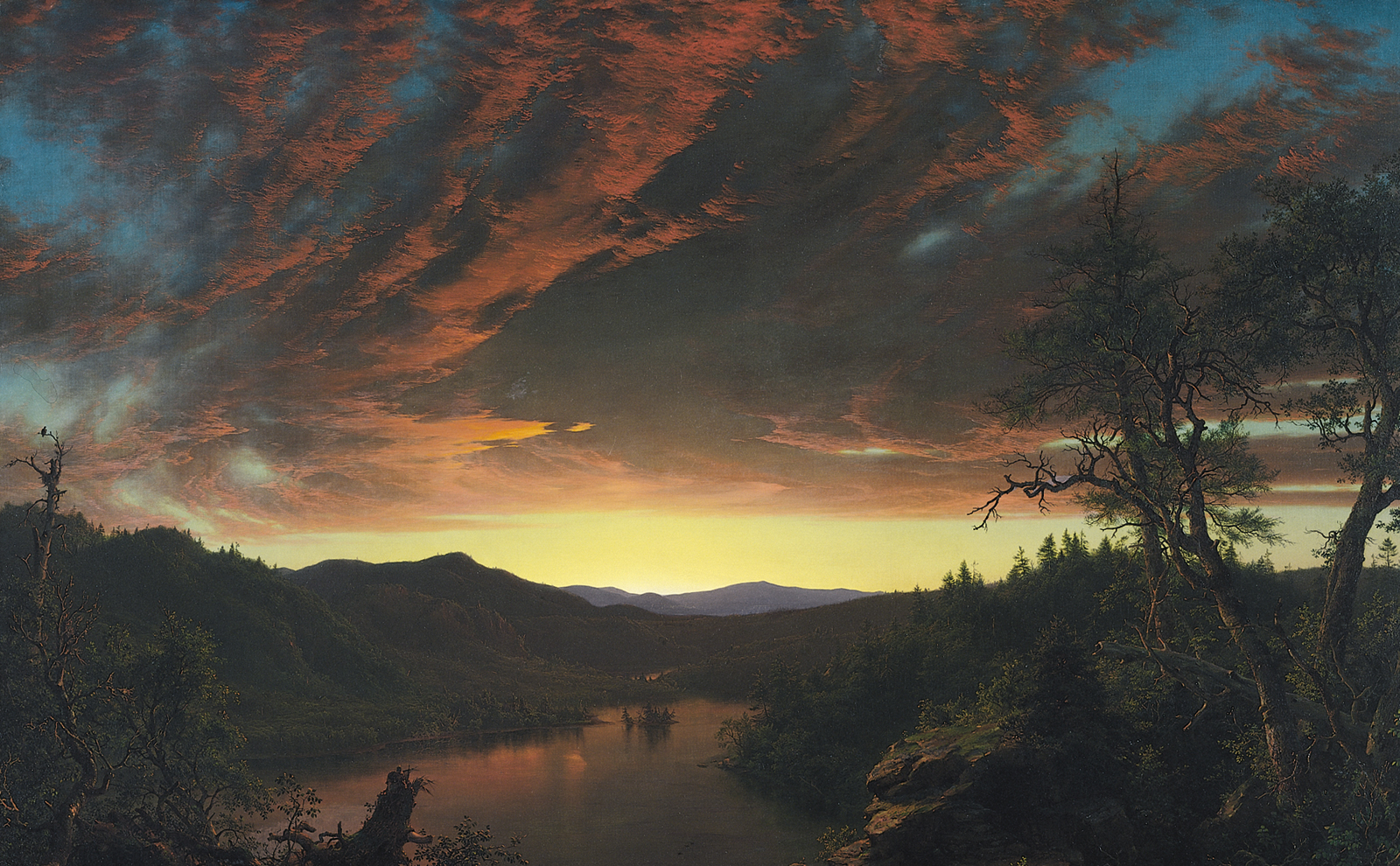 Twilight in the Wilderness (1860) by Frederick Edwin Church (1826-1900)
Twilight in the Wilderness (1860) by Frederick Edwin Church (1826-1900)
This changing conception of wilderness sparked the beginnings of the conservation movement in the United States. The late 19th century saw the creation of the country’s first national parks, lands preserved for their aesthetic, ecological, spiritual and intrinsic value. In 1892, New York State saw the passage of Article XIV, the Forever Wild clause -- the constitutional protections that still govern the Park today. As Cronon observes, these preserved open spaces represented the American frontier and functioned as sites of “national renewal, the quintessential location for experiencing what it meant to be an American.”
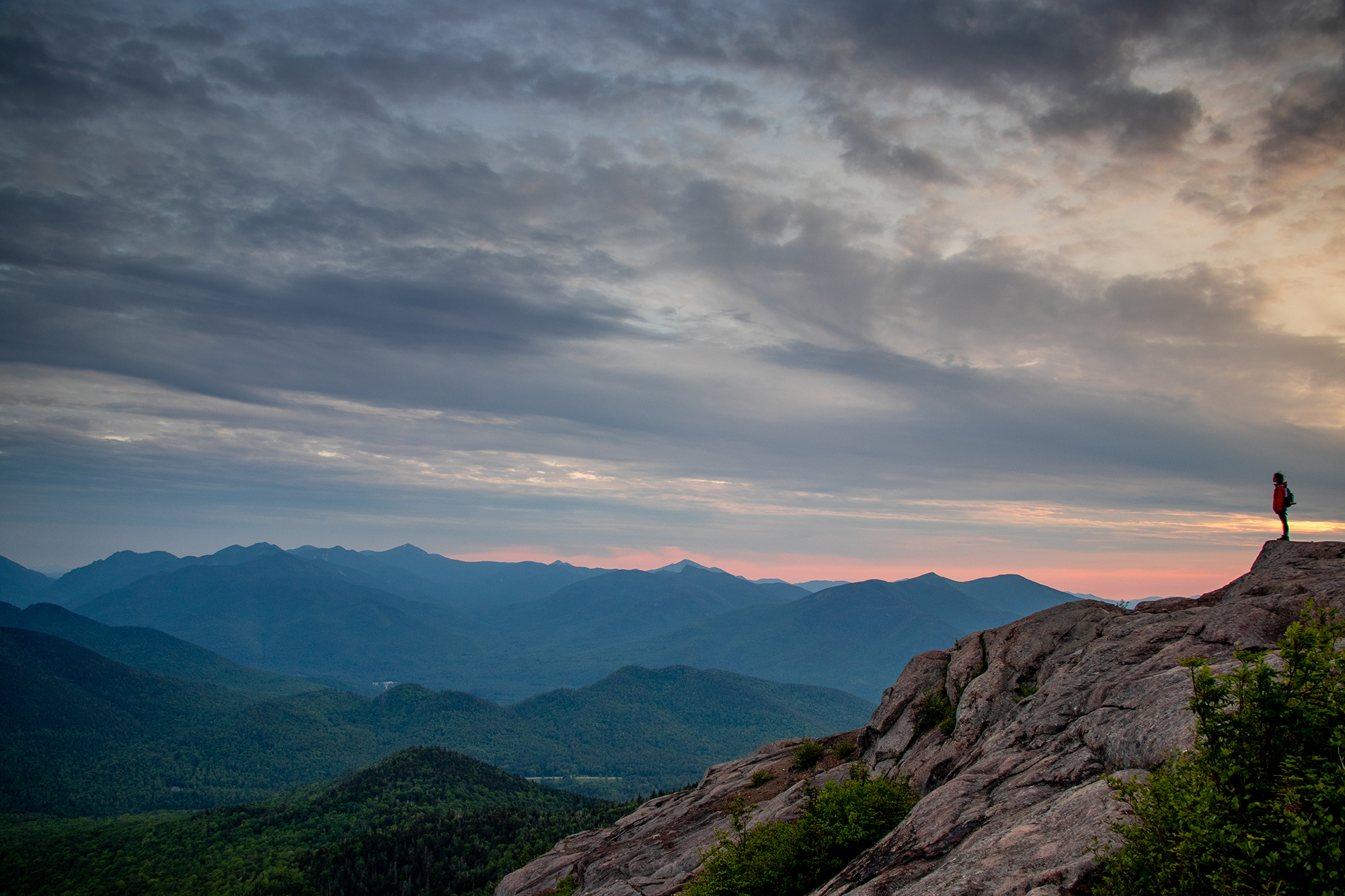 Photo: Photography & Social Media Intern Nick LaScala
Photo: Photography & Social Media Intern Nick LaScala
Wilderness as legal precept
Both colloquial and legal definitions of “wilderness” reference its non-human character. In the Wilderness Act of 1964 and the Adirondack Park State Land Master Plan of 1972, wilderness is defined as, “an area where the earth and its community of life are untrammeled by man, where man himself is a visitor who does not remain.” The word “untrammeled” looks like it might mean “un-trampled,” but its closest synonym is actually “unrestricted.”
This presents an essential paradox: wilderness designation and management are fundamentally human manipulations of nature; however, such designations need to exist to protect wilderness areas from the degradation associated with human activities. Thus, there is no wilderness with — or without — human manipulation.
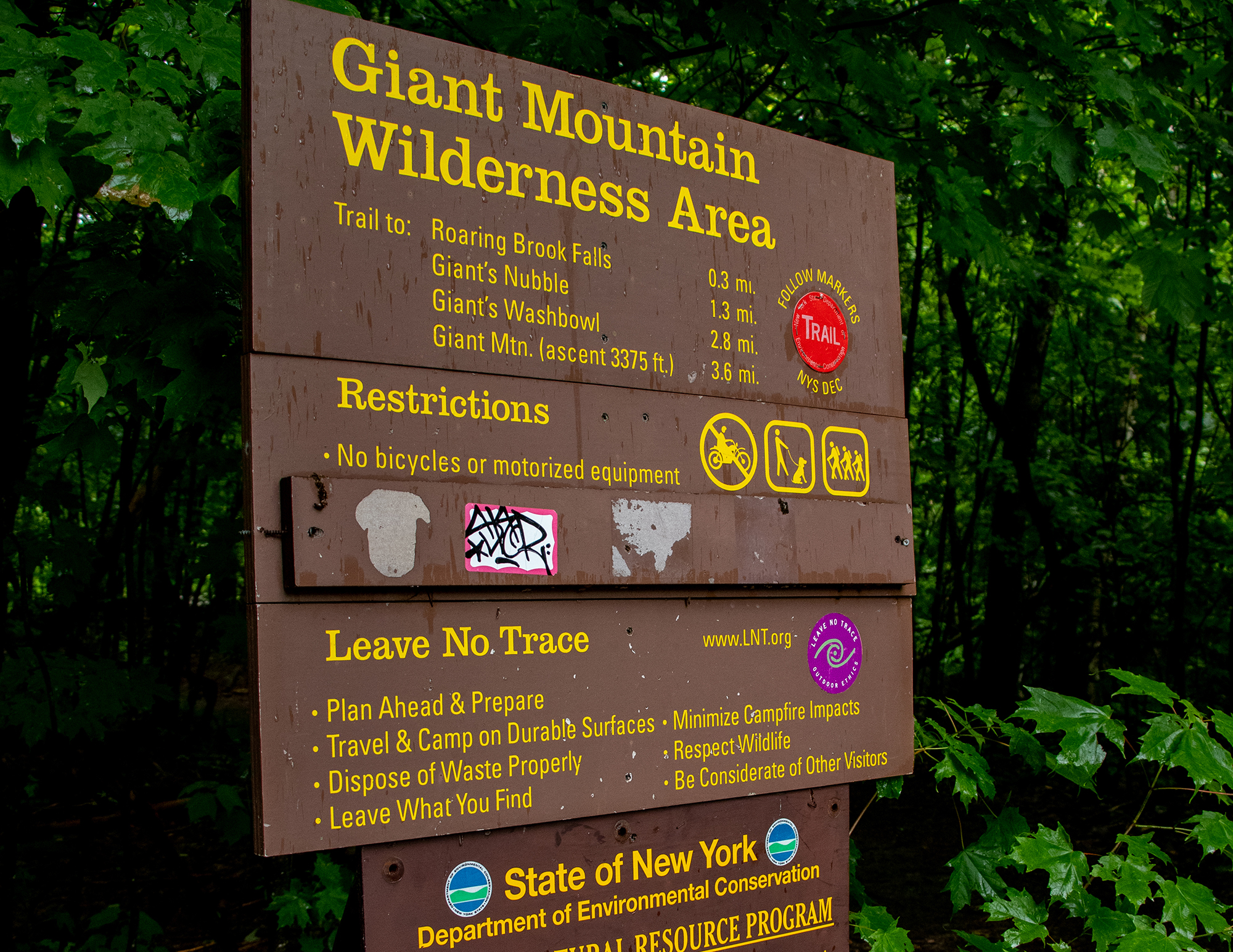 Photo: Photography & Social Media Intern Nick LaScala
Photo: Photography & Social Media Intern Nick LaScala
"Wilderness” is sometimes imagined as a place where we can leave behind the things that can divide us — race, class, gender, sexual orientation, or political party. Wilderness looks essentially the same as it did centuries ago, so it seems like it could transcend time. Because humans do not live there, we can pretend that we escape our own influence. Because it is open space, it seems like a blank slate; however, as I have attempted to show, wilderness is not separable from elements of human life — it is a product of such things.
This does not make the existence of wilderness any less vital — we still urgently need stringent land protections for a multitude of ecological, social, and philosophical reasons that I will delve into in the third installment of this series. In my next post, I will ask: for whom does wilderness exist? In the meantime, I would love to know — what does “wilderness” mean to you?
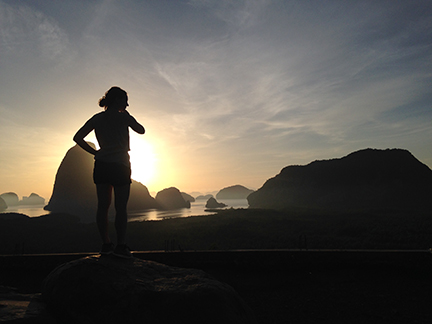
Julia Randall is from Albany, NY and graduated from Williams College this year with a degree in English. As a Clarence Petty Conservation Intern, she works on a variety of projects related to overuse and wilderness management, including a white paper that envisions an EV shuttle system in the Adirondack Park. An aspiring environmental lawyer, Julia is passionate about climate justice and getting the words right. In her free time, she enjoys hiking, making music, and frequenting Donnelley’s Ice Cream.




